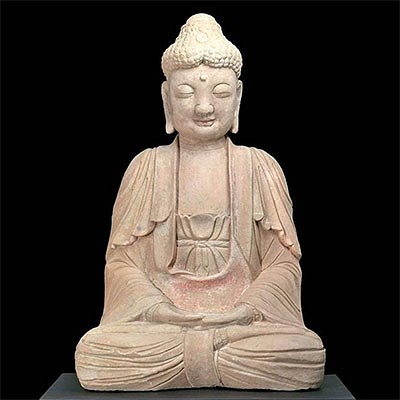11th C. Islamic Tiles Kufic Text from Quran, TL'd
Lot 60
About Seller
Artemis Gallery
686 S Taylor Ave, Ste 106
Louisville, CO 80027
United States
Selling antiquities, ancient and ethnographic art online since 1993, Artemis Gallery specializes in Classical Antiquities (Egyptian, Greek, Roman, Near Eastern), Asian, Pre-Columbian, African / Tribal / Oceanographic art. Our extensive inventory includes pottery, stone, metal, wood, glass and textil...Read more
Categories
Estimate:
$9,000 - $12,000
Absentee vs Live bid
Two ways to bid:
- Leave a max absentee bid and the platform will bid on your behalf up to your maximum bid during the live auction.
- Bid live during the auction and your bids will be submitted real-time to the auctioneer.
Bid Increments
| Price | Bid Increment |
|---|---|
| $0 | $25 |
| $300 | $50 |
| $1,000 | $100 |
| $2,000 | $250 |
| $5,000 | $500 |
| $10,000 | $1,000 |
| $20,000 | $2,500 |
| $50,000 | $5,000 |
| $100,000 | $10,000 |
| $200,000 | $20,000 |
About Auction
By Artemis Gallery
Feb 18, 2021
Set Reminder
2021-02-18 10:00:00
2021-02-18 10:00:00
America/New_York
Bidsquare
Bidsquare : Exceptional Antiquities, Asian, Ethnographic
https://www.bidsquare.com/auctions/artemis-gallery/exceptional-antiquities-asian-ethnographic-6373
Museum-worthy examples of Egyptian, Greek, Roman, Etruscan, Near Eastern, Far East / Asian, Pre-Columbian, African / Tribal, Oceanic, Native American, Spanish Colonial, Russian, Fossils, Ancient Jewelry, Fine Art, so much more! Artemis Gallery info@artemisgallery.com
Museum-worthy examples of Egyptian, Greek, Roman, Etruscan, Near Eastern, Far East / Asian, Pre-Columbian, African / Tribal, Oceanic, Native American, Spanish Colonial, Russian, Fossils, Ancient Jewelry, Fine Art, so much more! Artemis Gallery info@artemisgallery.com
- Lot Description
Near East, Ghazni province of Afghanistan, ca. 1000 CE. A pair of pottery tiles that are beautifully incised with Kufic writing from the Quran (also Qu'ran or Koran) and decorative motifs. Aside from the organic floral and leaf-like forms, the decorative program is primarily comprised of abstract geometric motifs and the beautiful Kufic script, thus abiding by Islam's disavowal of representations of living beings in sacred contexts. Kufic is the oldest calligraphic type of Arabic script; it is a modified version of old Nabatean script, and its name originates from the city of Kufa; however, it was also used in Mesopotamia at least 100 years before Kufa was founded. The first copies of the Quran were written in Kufic, and due to the widespread nature of the Quran, archaic Kufic became quite prevalent by the 8th century. When used to create beautiful aesthetic patterns on tiles like these, it is sometimes referred to as the Farsi word hazarbaf. Size: tiles measure 12" L x 7.5" W (30.5 cm x 19 cm) & 10" L x 8.75" W (25.4 cm x 22.2 cm)
Traditionally, Muslims display writing from the Quran in their homes. During ancient times, such inscriptions were on tiles like these examples. Today, however, they are usually on wood or fabric.
This piece has been tested using thermoluminescence (TL) analysis and has been found to be ancient and/or of the period stated. A full report will accompany purchase.
Provenance: private California, USA collection, by descent, moved from Germany in 1997, originally collected in the 1970s in Hamburg, Germany
All items legal to buy/sell under U.S. Statute covering cultural patrimony Code 2600, CHAPTER 14, and are guaranteed to be as described or your money back.
A Certificate of Authenticity will accompany all winning bids.
We ship worldwide and handle all shipping in-house for your convenience.
#155967TL holes in both tiles are on the bottom and the top on the backside. The wider is repaired from two pieces. The taller is repaired from three or four pieces. Both have some small chips and nicks from their peripheries, but are overall very nicely preserved with rich deposits.Condition
- Shipping Info
-
All shipping is handled in-house for your convenience. Your invoice from Artemis Gallery will include shipping calculation instructions. If in doubt, please inquire BEFORE bidding for estimated shipping costs for individual items.
-
- Buyer's Premium



 EUR
EUR CAD
CAD AUD
AUD GBP
GBP MXN
MXN HKD
HKD CNY
CNY MYR
MYR SEK
SEK SGD
SGD CHF
CHF THB
THB















